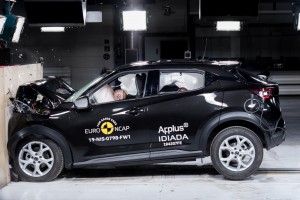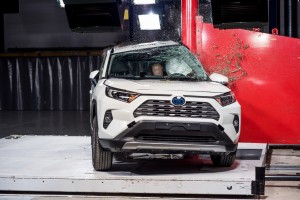Using high-speed cameras for vehicle safety testing
In recent years, vehicle safety has become one of the main characteristics identified when buying a car[1]. One of the most important players in this global understanding of safety is the emergence of entities such as EuroNCAP that have been pushing the European automotive market towards better vehicle safety for over 20 years. As a result, the latest studies place technology, reliability and safety as key features for consumers. In order to improve safety in cars, specially designed facilities around the world are continuously increasing their efforts to adapt the testing areas to the new challenges of the industry.
Applus+ IDIADA Passive Safety laboratory in Santa Oliva has been developing engineering projects since 1996. The expertise and knowledge developed over this period has meant this laboratory has been awarded as one of most valued crash test facilities worldwide.
One of the key areas to explain this top positioning is the high-performance scientific image. In this regard, pioneer tools are managed helping our customers to precisely identify improvement areas in vehicle development. This process includes the use of High-Speed Cameras.


The classic approach of image science states that 25 frames per second are enough to be perceived by our brain as a continuous image sequence. So, most popular playback speeds used in broadcast are between 25 and 30 fps (some modern ones running up to 60 fps). For this use, specific technology allows us to get up to 75K frames per second sequence, but most demanded frequency in our standard set-up is 1000 fps in Full HD resolution (1920×1080 pixels). This means, working at 1000fps and reproducing at 25fps, we get a 40 times slow motion sequence.
Another key feature is the lighting system. When working at high frequencies, our maximum shutter time is 1000 microseconds and for sure this wouldn’t be enough in terms of blurring and definition; so we must use special lamps to increase the lighting levels as sunlight does: 5500 Kelvin degrees, ultra-high power and square wave simulation. We are currently working under a 250KW lighting system for this purpose connected to a ballast that simulates a continuous powered lamp to avoid light flicker, a typical unwanted effect when an alternating current is used.
If you have seen some of our videos, you’ll have observed white painting on floor. This is because of lighting direction. We have designed the main crash area as a photographic studio is conceived. The light comes from the top in descending direction, so it causes a lighting fall on the bottom of the vehicle. To minimize this undesired effect, we use white painting as a reflector. The edges of the up-coming light are reflected in a bottom-up way and so we get a uniform light for the entire vehicle. This resolution means that we must do strict maintenance efforts to keep this area in good conditions for testing.
Scientific imaging is going to become one of the most important players in the understanding of the safety of new car models. Our cars are implementing in each new version more and more camera systems to help us in terms of safety. With the arrival of the autonomous vehicle, we’ll surely see this scenario increase in further years, so we can be optimistic in terms of coming professional challenges.
By David Rodríquez de la Cruz
[1] – https://www.statista.com/forecasts/997119/purchase-criteria-for-cars-in-the-us